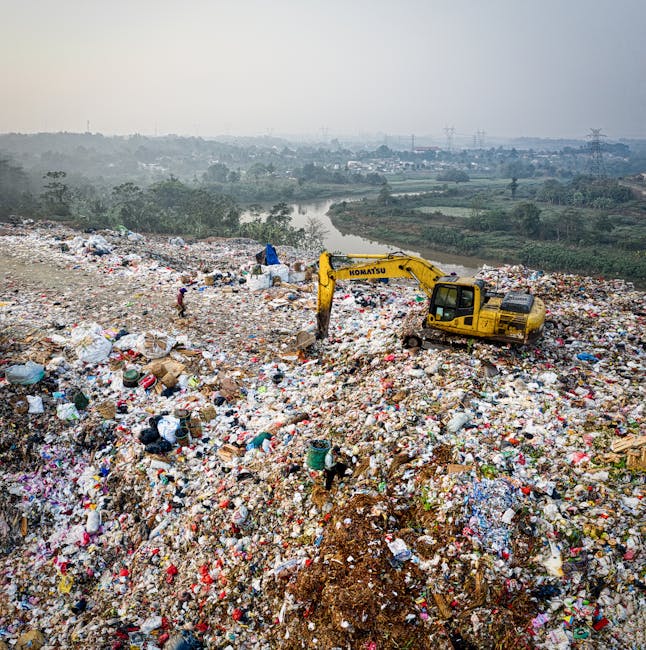The State Unveiled

In the United States, a significant environmental concern lies in the high number of toxic waste dumps scattered across certain regions. Among the states, one stands out prominently: New Jersey. Known for its bustling cities and vibrant culture, New Jersey also carries the burden of having the most toxic waste sites in the nation. This notoriety is not just a trivial fact; it reflects deep-rooted industrial history and ongoing environmental challenges. With over 100 Superfund sites, New Jersey leads the nation, and this has sparked widespread concern about the long-term health implications for its residents.
The Industrial Legacy

New Jersey’s industrial legacy dates back to the 19th century when it was a hub for manufacturing and production. Factories sprouted across the state, producing everything from chemicals to textiles. While these industries fueled economic growth, they also left behind a toxic footprint. Many of these factories improperly disposed of hazardous materials, leading to contaminated soil and water. Over time, these neglected sites transformed into toxic waste dumps, posing significant threats to both the environment and public health. The legacy of industrial pollution continues to haunt the state, with efforts to remediate these sites being both costly and complex.
Superfund Sites Explained

The term “Superfund site” might sound technical, but it represents a crucial aspect of environmental protection. Superfund is a program established by the U.S. Environmental Protection Agency (EPA) to address the cleanup of hazardous waste sites. In New Jersey, over 100 locations have been designated as Superfund sites, meaning they have been identified for cleanup due to the risks they pose. These sites often contain a mix of harmful substances, including heavy metals, volatile organic compounds, and other toxic chemicals. The goal of the Superfund program is to mitigate these risks and restore the land to a safe condition.
Health Impacts on Residents

The presence of numerous toxic waste dumps in New Jersey has raised serious concerns about the health of its residents. Studies have shown that exposure to hazardous chemicals can lead to a range of health issues, from respiratory problems to cancer. Communities located near Superfund sites often report higher incidences of certain diseases, prompting health experts to investigate the link between environmental contamination and public health. Moreover, the psychological impact of living near a toxic waste dump cannot be overlooked, as residents often experience stress and anxiety about their safety and well-being.
Environmental Justice Concerns

Environmental justice is a critical issue in the discussion of toxic waste dumps. In New Jersey, many of the affected communities are low-income or minority populations, highlighting the disproportionate impact of environmental hazards. These communities often lack the resources to advocate for themselves and are more vulnerable to the effects of pollution. Efforts to address environmental justice aim to ensure that all individuals, regardless of their background, have access to a clean and safe environment. This includes prioritizing the cleanup of toxic waste sites in disadvantaged areas and involving local communities in decision-making processes.
The Role of Government and Policy

Addressing the issue of toxic waste dumps requires strong government intervention and effective policies. In New Jersey, both state and federal agencies are involved in the cleanup and regulation of hazardous waste sites. The EPA plays a central role through the Superfund program, while state agencies oversee compliance with environmental laws and regulations. Policymakers are tasked with balancing economic development with environmental protection, ensuring that new industries do not repeat the mistakes of the past. Additionally, public awareness and advocacy are crucial in holding governments accountable and pushing for stronger environmental protections.
Community Efforts and Activism

Community activism has been a driving force in raising awareness about the dangers of toxic waste dumps in New Jersey. Local residents, environmental groups, and non-profit organizations have come together to advocate for cleanup efforts and policy changes. These groups often organize protests, educational campaigns, and community meetings to keep the issue in the public eye. Their efforts have led to increased funding for remediation projects and greater transparency in government actions. Community involvement is essential in ensuring that the voices of those most affected by pollution are heard and that their needs are addressed.
Challenges of Cleanup and Remediation

Cleaning up toxic waste dumps is a daunting task, fraught with technical and financial challenges. In New Jersey, many Superfund sites are complex and require specialized methods to remove or contain hazardous materials. The process can take years, if not decades, and costs millions of dollars. Funding for remediation is often limited, leading to delays and incomplete projects. Additionally, the ongoing discovery of new contamination adds to the burden. Despite these challenges, efforts to remediate these sites continue, driven by the commitment to protect public health and restore the environment.
The Path Forward

Looking ahead, the path to addressing toxic waste dumps in New Jersey involves a combination of cleanup efforts, policy changes, and public engagement. Continued investment in remediation projects is essential to reduce the health risks associated with contaminated sites. Policymakers must prioritize environmental justice and ensure that all communities benefit from clean and safe surroundings. Public awareness and education play a crucial role in fostering a culture of environmental responsibility. By working together, government agencies, communities, and activists can make significant strides toward a healthier future for New Jersey and its residents.
Conclusion of the Problem

In summary, New Jersey’s status as the U.S. state with the most toxic waste dumps is a complex issue rooted in historical industrial practices and ongoing environmental challenges. The presence of numerous Superfund sites poses significant health risks to residents, particularly in vulnerable communities. Addressing this problem requires a multifaceted approach involving government intervention, community activism, and public awareness. While the road ahead is challenging, a concerted effort can lead to meaningful progress in safeguarding public health and restoring the environment.


